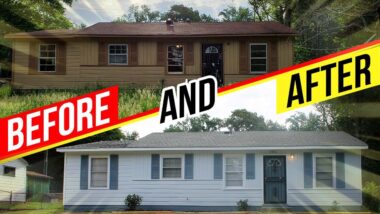This Questionnaire from REISkills for Prospecting Sellers is not a random list of questions; it’s a carefully crafted psychological script designed to build rapport, uncover pain points, and guide the seller toward your solution.
Here is a breakdown of the sales psychology and NLP (Neuro-Linguistic Programming) principles embedded in these questions.
- Overarching Psychological Strategy
The script follows a classic pain-and-solution funnel:
- Build Rapport & Lower Defenses: Start with easy, non-threatening questions.
- Uncover the Problem & Amplify the Pain: Gently lead the seller to articulate their motivation and the burdens of ownership.
- Define the Ideal Solution: Let the seller define the parameters of their own rescue.
- Present Your Proposals as the Logical Relief: Frame your investor offers as the direct answer to the problems they’ve just described.
- Detailed Breakdown of Psychology and NLP
Section 1: Asking About The Seller And Their Property
Psychology Goal: Build rapport, establish trust, and subtly shift the seller’s mindset from “proud homeowner” to “burdened owner.”
- 1. “Can you tell me a little bit about your home?”
- NLP (Rapport Building): This is an open-ended, easy question that lets the seller lead. It uses the word “home,” which is emotional, not just “property.” You are instructed to listen, which is the most powerful rapport-building tool. It makes the seller feel heard and valued.
- Psychology: It gets them talking and comfortable with you. People like to talk about themselves and their things.
- 2. “What do you like most about the home?” & 3. “What do you like least?”
- NLP (Pattern Interrupt & Framing): This is a classic pattern of “Pace, Pace, Lead.” You pace their reality (what they like) before leading them to consider the negative (what they don’t like).
- Psychology: The “like least” question is genius. It forces the seller to verbally articulate the property’s flaws and their own frustrations. Every time they state a problem (“the roof leaks,” “the yard is too much work”), they are reinforcing their own motivation to sell. You are amplifying their pain without being the one to point it out.
- 4. “Are there any repairs needed?”
- Psychology: This directly confronts the “burden” aspect. It makes the seller think about the cost, hassle, and time required to fix the property, increasing the appeal of a quick, “as-is” sale to an investor like you.
- 5. “What is your sales price and how did you arrive at it?”
- NLP (Meta-Model): This challenges the potential distortion or generalization behind their price. Instead of just accepting a number, you ask for the process behind it.
- Psychology: This reveals their mindset. If they say, “A real estate agent told me,” they are thinking retail. If they say, “I need to get $X to break even,” you know their bottom line. If they say, “It’s tax assessed,” you know they are likely underpriced. It gives you the leverage of knowing their reasoning, which you can later gently reframe.
- 6. “What do you think your house would appraise for in excellent condition?”
- Psychology: This does two things. First, it gets them to state a (usually higher) theoretical value. Second, and more importantly, it creates a contrast between that perfect, repaired value and the current, as-is reality. It highlights the gap they would need to fill with time and money to achieve that price.
- 7. “What do you think your property could rent for?”
- Psychology: This is a subtle pattern interrupt. It introduces a completely different solution (renting) into their mind. If they haven’t considered it, it can make a quick sale seem more attractive. If they have considered it and rejected it, it allows them to tell you why (“I don’t want to be a landlord”), which is a direct admission that they are motivated and want out of the responsibility.
- 8. “If you don’t mind me asking, why are you selling?”
- NLP (Embedded Command & Presupposition): The phrase “why are you selling” presupposes that they are selling. It assumes the sale is a done deal, framing the conversation around “how,” not “if.”
- Psychology: This is the core motivation question. The “if you don’t mind me asking” softens it, but the goal is to get them to reveal the emotional or financial pain driving the sale (divorce, job loss, inheritance). This is the “why” behind your entire deal structure.
Section 2: Asking About The Existing Financing
Psychology Goal: To quantitatively define the problem and uncover the financial pressure.
- 9. “Do you own the house free and clear?”
- Psychology: A simple qualifying question that determines the entire path of the negotiation. A “yes” leads to seller-financing strategies. A “no” leads to subject-to or lease option strategies.
- 10. “Would you sell the house for what you owe?”
- NLP (Direct Suggestion & Future Pacing): This is a powerful, direct suggestion that plants the seed of a “Subject-To” deal. It future-paces the seller into imagining a scenario where they walk away with zero cash but also zero debt and responsibility.
- Psychology: It’s a pure test of motivation. A “yes” means they are highly motivated and just want out. A “no” tells you they need cash from their equity.
- 11. “How much are the monthly payment on the mortgage?” & 12. “Are the payments current?”
- Psychology: These questions make the seller confront the ongoing financial burden. Saying the payment amount out loud reinforces the monthly pain. The question about being current is a direct probe for urgency. If they are behind, their motivation is extremely high, and you can frame your offer as a “foreclosure rescue.”
Section 3: What Kind Of Deal Can You Get
Psychology Goal: To make your offers feel like the natural, logical, and relieving solution to the problems the seller has just confessed.
- 13. “If I paid you all cash and closed quickly, what is the least you could take?”
- NLP (Embedded Commands & Presuppositions): The phrase contains the commands “pay you all cash” and “close quickly.” It presupposes that a deal is happening (“the least,” not “*a* price”) and that speed is valuable.
- Psychology: This is the classic wholesale question. It leverages the powerful principle of certainty and speed over maximum price. The follow-up (“is that truly the least?”) is a gentle compliance push, asking for one more small concession after they’ve already given a number.
- 14. “Will you consider leasing the property to me with an option to buy if I guarantee the mortgage payments and maintenance?”
- NLP (Reframing): This reframes you from a “lowballing predator” to a “solution provider and risk-taker.” You are offering to take over their two biggest burdens: the payment and the maintenance.
- Psychology: It directly solves the problems they likely mentioned in questions 4 (repairs) and 11 (monthly payments). You are not just asking for a discount; you are offering to shoulder their pain.
- 15. “Do you have a problem with someone living in the property until I get it sold?”
- Psychology: This is a permission-based question that introduces a potential objection (“I don’t want tenants”) and gets you a “no” before you proceed. It’s also subtly revealing your exit strategy (assigning the contract or selling on terms), establishing your role as an investor transparently.
- 16. “Would you consider optioning the property to me, if there is absolutely no risk or cost to you?”
- NLP (The “No-Lose” Close): This is the ultimate low-risk, high-reward close for you. The language is meticulously crafted: “no risk or cost to you.”
- Psychology: It’s almost impossible for a logical person to refuse an offer with zero downside. If they say “no” to this, you have confirmed they are not a motivated seller at all, and you can walk away with 100% confidence that you haven’t wasted your time. It’s the final, pure test of motivation.
- Summary of Key NLP & Psychological Techniques Used:
- Rapport Building: Using their name, open-ended questions, and active listening.
- Pacing and Leading: Acknowledging their reality (the good) before guiding them to the problem (the bad).
- Presuppositions: Using language that assumes the sale is inevitable.
- Embedded Commands: Slipping action-oriented phrases (“pay you all cash,” “close quickly”) into questions.
- Reframing: Changing the context of the conversation from “you taking their house” to “you solving their problem.”
- Amplifying Pain: Asking questions that force the seller to verbally rehearse their problems and burdens.
- The “No-Lose” Close: Presenting an offer so risk-free that a rejection reveals everything you need to know.
- MOTIVATED SELLER PHONE SCRIPT CHEAT SHEET
Goal: Qualify the seller and the deal in under 10 minutes. Build rapport, uncover motivation, and determine if a visit is worthwhile.
PHASE 1: RAPPORT & PROPERTY DETAILS
(Goal: Get them talking and comfortable)
- “Hi [Seller Name], I’m [Your Name]. Can you tell me a little bit about your home?”
- Listen and take notes. Let them lead.
- “What do you like most about the home?”
- (Paces their reality, builds rapport)
- “What do you like least about it?”
- (The key question to uncover pain points and burdens)
- “Are there any repairs that are needed?”
- (Amplifies the burden of ownership)
PHASE 2: MOTIVATION & VALUATION
(Goal: Gauge their motivation and pricing mindset)
- “What is your sales price and how did you arrive at it?”
- (Reveals their reasoning – agent, need-based, etc.)
- “What do you think it would appraise for in excellent condition?”
- (Creates contrast between dream price and current reality)
- “If you don’t mind me asking, why are you selling?”
- (The CORE motivation question. Listen for the pain.)
- “Is your property listed with a real estate agent?”
- (Qualifies if they are under contract)
PHASE 3: FINANCIAL SITUATION
(Goal: Quantify the problem and find the leverage)
- “Do you own the house free and clear?”
- (If YES, focus on Seller Financing. If NO, proceed…)
- “Would you be willing to sell it for what you owe?”
- (The direct test for a “Subject-To” deal. High-motivation indicator.)
- “How much are the monthly mortgage payments?”
- (Makes them confront the ongoing financial pain)
- “Are the payments current?”
- (The urgency test. If NO, high motivation.)
PHASE 4: PRESENTING SOLUTIONS
(Goal: Propose deals based on their answers)
If the price seems high, pivot to TERMS:
- “If I paid you all cash and closed quickly, what is the very least you could take?”
- (The wholesale price test. Follow up: “Is that truly the least?”)
- “Would you consider leasing the property to me with an option to buy? I’d guarantee the mortgage payments and handle all maintenance.”
- (The “I’ll take over your burdens” offer.)
- “Do you have a problem with someone else living there until I get it sold?”
- (Gets permission for your exit strategy upfront.)
The Final “No-Lose” Test:
- “If those don’t work, would you consider a simple option agreement? I’d pay you for the exclusive right to buy it. There’s absolutely no risk or cost to you, and you can keep trying to sell it yourself.”
- (If they say NO, they are not motivated. Thank them and WALK AWAY.)
BEFORE YOU VISIT – THE COMMITMENT QUESTION
“If I come out, we agree on a price/terms, will you be ready to sign the paperwork right then?”
- (This confirms they are serious and saves you from tire-kickers.)
Pro Tip: Keep this cheat sheet nearby during calls. Don’t read it verbatim; use it as a guide to keep the conversation natural and flowing.



